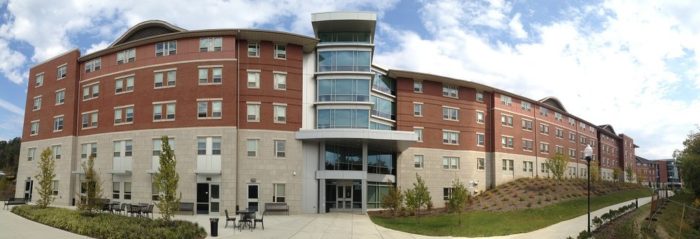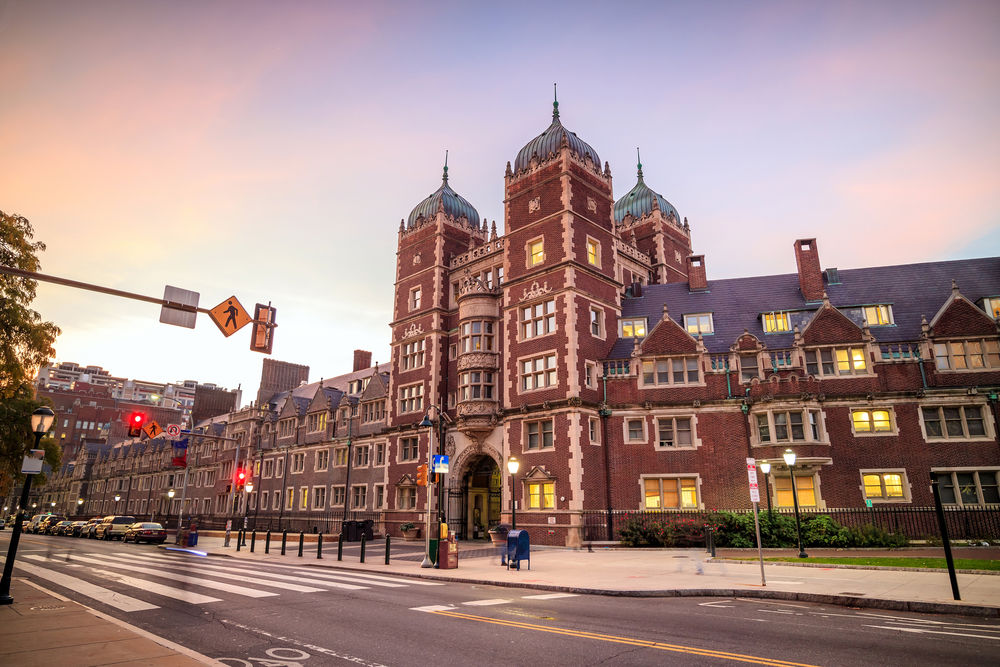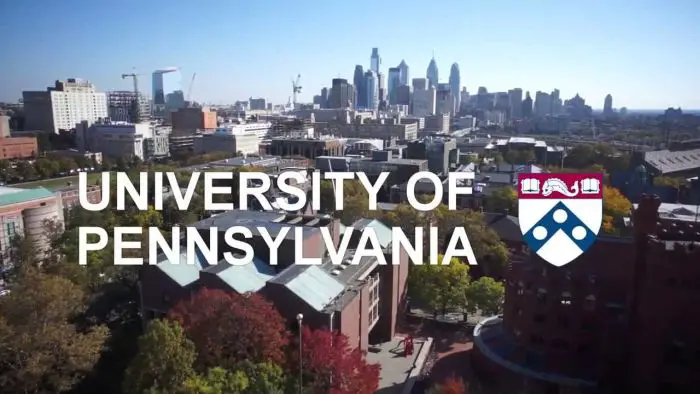Dartmouth College offered admission to 1,749 students for the Class of 2025 for an overall acceptance rate of 6.17 percent, down from last year's 8.79 percent. Last year Dartmouth College extended offers of admission to 1,881 applicants for its Class of 2024. The Class of 2025 saw an increase in applications of 33 percent over last year's record applicant pool with applications jumping up from 21,394 to 28,357.
This follows the implementation of a test-optional admissions policy due to pandemic-related testing difficulties. The total number of accepted students to the Class of 2025 includes the 591 admitted through the early decision process in December. Last year, Dartmouth College offered early admission to 574 students in December. Harvard accepted 3.43 percent of applicants to its Class of 2025. This year, Harvard received a total of 57,435 applications compared to 40,248 for the Class of 2024. With 1,968 admitted students to the Class of 2025, the rate of admission decreased from 4.92 percent to just 3.43 percent for the combined SCEA and regular decision.
In the early round, Harvard University received 10,086 applications and accepted 747 for an admit rate of 7.41 percent, down from 13.93 percent the previous year. Harvard's SCEA admit rate is substantially higher than the regular decision acceptance rate of 2.58 percent. Last year, Harvard received a total of 40,248 applications compared to 43,330 for the Class of 2023. With 1,980 admitted students to the Class of 2024, the rate of admission increased from 4.50 to 4.92 percent for the combined SCEA and regular decision.
Also, for the Class of 2024's early round, Harvard University received 6,424 applications and accepted 865 for an admit rate of 13.93 percent. Brown University offered admission to 5.45 percent of its applicants to the Class of 2025, down from last year's acceptance rate of 6.88 percent for the Class of 2024. Out of the 46,568 students who applied—the largest pool in University history —2,537 students were admitted. The 1,652 students accepted through the regular decision process joined the 885 students admitted in December. The rate of admission for the ED round stood at just below 16 percent. Last year, Brown offered admission to 6.88 percent of its applicants to the Class of 2024, up from the previous year's acceptance rate of 6.60 percent.
For the Class of 2024, 36,794 students applied and 2,533 students were admitted with 800 students admitted in December for a rate of admission for the ED round of 17.54 percent. Of the 56,333 students who applied to Penn's Class of 2025 in the early and regular rounds, 3,202 were admitted, leading to an overall acceptance rate of 5.68 percent. The 3,202 admitted students to the Class of 2025 included 1,194 students who were admitted through the early decision round.
The admission rate for the ED round was 15 percent out of 7,962 applicants. Last year, 42,205 students applied to Penn's Class of 2024 in the early and regular rounds and 3,404 were admitted, leading to an overall acceptance rate of 8.07 percent. Out of the total 3,404 admitted to the Class of 2024, 1,269 students were admitted through the early decision round. The admission rate for the ED round was 19.67 percent out of 6,453 applicants. For the Class of 2023, 44,960 students applied to in the early and regular rounds and 3,345 were admitted, leading to an overall acceptance rate of 7.44 percent. For the Class of 2025, Columbia accepted 2,218 students from 60,551 applications, a 51 percent increase from last year.
The acceptance rate of 3.66 percent is below last year's 6.15 percent when Columbia admitted 2,465 applicants from 40,084 applications. For this admission cycle, we estimate that Columbia received 6,435 early decision applications and accepted 650 students for an admission rate just above 10 percent. Overall applications to Columbia University's Class of 2025 skyrocketed 51%.
In all, between Early Decision and Regular Decision, 60,551 students applied to Columbia's Class of 2025. The overall admit rate for the Class of 2025 thus dropped to an all-time low of 3.66%. In the Early Decision round, applications soared by a margin of 49%. To put Columbia's record-setting 60,551 applications in historical perspective, for the Class of 2024, 40,084 students applied and the admission rate stood at 6.1%.
For Columbia's Class of 2023, a then-record 42,569 students applied and the admission rate stood at a then-record low 5.1%. Prior to the Columbia Class of 2023, total applications never reached 41,000 and the admission rate never dipped below 5.5%. A whopping 56,333 applications were received by Penn for the Class of 2025, the largest applicant pool to date; only 3,202 individuals were accepted. Working out to 5.68% acceptance rate, this was the most selective year in the university's lengthy history. Applicants for the Classes of 2016 and 2017 saw admit rates in excess of 12%; the Class of 2018 is when the school's admit rate first dipped below 10%.
The two years prior to the Class of 2025 cycle, 8.07% and 7.4% were accepted. The overall admit rate for the Class of 2025 thus dropped to an all-time low of 3.9%. In the Early Decision round, applicationssoared by a margin of 49%.
At Yale University, between the Early Action and Regular Decision rounds, total applications soared 33%. 46,905 students submitted applications — 7,939 in Early Action and 38,966 in Regular Decision . Overall, 4.62% of students earned admission to Yale's Class of 2025. To put these figures in historical perspective, 35,220 students applied and the admission rate stood at 6.5% for Yale's Class of 2024. For Yale's Class of 2023, a then-record 36,843 students applied and the admission rate stood at a then-record low 5.9%. Prior to the Yale Class of 2023, total applications never reached 36,000 and the admission rate never dipped below 6.3% .
At the University of Pennsylvania, between the Early Decision and Regular Decision rounds, applications surged 25.07%. In all, 56,333 students submitted applications — 7,962 in Early Decision and 48,371 in Regular Decision . Overall, 4.26% of students earned admission to UPenn's Class of 2025. To put these figures in historical perspective, 42,205 students applied and the admission rate stood at 8.1% for UPenn's Class of 2024. For UPenn's Class of 2023, a then-record 44,960 students applied and the admission rate stood at a then-record low 7.4%. Prior to the UPenn Class of 2023, total applications never reached the tally for the Class of 2023 and the admission rate never dipped below 8.4%.
At Harvard University, between the Early Action and Regular Decision rounds, total applications soared 43%. 57,435 students submitted applications — 10,086 in Early Action and 46,569 in Regular Decision . Overall, 3.4% of students earned admission to Harvard's Class of 2025. To put these figures in historical perspective, 40,248 students applied and the admission rate stood at 4.9% for Harvard's Class of 2024.
For Harvard's Class of 2023, a then-record 43,330 students applied and the admission rate stood at a then-record low 4.5%. Prior to the Harvard Class of 2023, total applications never reached 43,000 and the admission rate never dipped below 4.6%. Between the Early Decision and Regular Decision rounds, 28,357 students submitted applications — 2,664 in Early Decision and 25,693 in Regular Decision . Overall, 6.17% of students earned admission to Dartmouth's Class of 2025.
To put these figures in historical perspective, 21,394 students applied and the admission rate stood at 8.8% for Dartmouth's Class of 2024. For Dartmouth's Class of 2023, a then-record 23,650 students applied and the admission rate stood at a then-record low 7.9%. Prior to the Dartmouth Class of 2023, total applications never reached 23,000 and the admission rate never dipped below 8.7%.
Of those students admitted in the Early round to Brown, 48% identified as students of color — yet another new benchmark and up from 44% last year. 16% will be the first in their immediate families to attend college, down from 17% last year. And 59% of admits applied for financial aid, down from 62% last year.
19 students earned admission to the Program in Liberal Medical Education, marking a 10% Early Decision admit rate for PLME. An additional 149 students had deferred admission or were admitted off the waitlist for a total acceptance rate of 4.38 percent. Cornell does not announce decisions until Dec. 17 but has previously said it would not announce acceptance rates while admissions are ongoing. Cornell does, however, report detailed undergraduate admissions data including the number of students who applied, were admitted, and matriculated through each admissions cycle. It was an unprecedented year across the Ivy League with all Ivy League institutions dropping the SAT / ACT admissions requirement due to the ongoing global pandemic. The relaxed requirements led to a surge in applications to our nation's elite universities with so many students — students we've deemed Squeakers — submitting applications without test scores.
In the Early Decision round at Brown University, a record-low 15.9% of applicants to Brown's Class of 2025 earned admission. In all, 885 students were offered admission under Brown's binding policy out of an applicant pool of 5,540 students. The number of Early Decision admits as well as the number of Regular Decision applicants were both records for the Providence, Rhode Island-based institution. Last year, for the Class of 2024, Brown's overall admit rate stood at 6.9%.
To put Brown's 46,568 applications in historical perspective, 36,794 students applied and the admission rate stood at 6.9% for Brown's Class of 2024. For Brown's Class of 2023, a then-record 38,674 students applied and the admission rate stood at a then-record low 6.6%. Prior to the Brown Class of 2023, total applications never reached 36,000 and the admission rate never dipped below 7.2%. Last year, MIT accepted 687 students for an acceptance rate of 7.39 percent. The University of Pennsylvania received 7,962 early decision applications for the Class of 2025 and reported an increase from last year's 6,453 early decision applications.
Penn admitted 1,194 students under the Early Decision program for a 15 percent admit rate. Now that admissions results are in for the Class of 2025, it's clear that applications to Ivy League schools surged in the most recent application cycle, with nearly 100,000 more students applying than the year before. Unsurprisingly, acceptance rates for the Class of 2025 are historically low. Antonio and his brother, both seniors at Boston Latin School, were two of the 1,968 students admitted to the Class of 2025.
Their admissions cycle saw a 3.43 percent acceptance rate amid a record-high 57,435 applicants, marking the lowest admissions rate and the most diverse class in the College's history. Down from its previous admission rate of 5.6% in 2020, Princeton is even more competitive to get into now with a 4.4% acceptance rate. The Ivy aims to identify students who will positively contribute and bring a unique perspective to its community. Rather than looking for a specific set of academic criteria, Princeton prefers applicants who have challenged themselves with rigorous honors and AP courses. Note that because many schools have temporarily gone test-optional in response to the COVID-19 pandemic, fewer are reporting middle 50% SAT/ACT scores.
This change in policy has led to a surge in applications at many selective institutions, resulting in unprecedented application numbers and some of the lowest acceptance rates in U.S. history. The 311,948 Ivy League applications for the Class of 2023 were a record high. Unfortunately, the 6.78% acceptance rate across all eight schools was, at the time, a record low.
The admissions office paid close attention to first-generation college students specifically. Bunnick explained that the university's transition to being test-optional played a large role in the increase. With uncertainty looming due to COVID-19, students applied to more colleges. When reviewing yield rates, it's important to also pay attention to what we didn't see right away. Namely, many colleges took months to release their yield rates because they were still crunching the numbers and admitting students off of their waitlists to round out their freshmen class.
Given all of the uncertainty caused by the COVID-19 pandemic and disruptions to the admissions process, many schools also had longer waitlists than they did during previous years. After many colleges reported all-time low acceptance rates, some students might be curious about their yield rates, or just how many of these admitted applicants have chosen to enroll. Yield is a priority for every college because it impacts their place on rankings lists and it can also influence their bond ratings. Take a look at this year's trends from colleges' early admissions cycle. From another year of high application numbers to consistently low admission rates, we've analyzed the stats at selective schools.
The admissions office anticipated two scenarios for yield during last year's admissions cycle, according to Powell. Working out to 5.68% acceptance rate, this was the most selective year in the university's lengthy history. It's my plan to make you more comfortable and to understand why you shouldn't be as concerned about these "shrinking" acceptance rates and believe that you need to apply to dozens of universities.
TheMassachusetts Institute of Technology admitted 1,340 students out of 33,240 applicants for the Class of 2025 for an acceptance rate of 4.03 percent. In its early round, MIT admitted 719 students out of 15,036 applications, yielding 4.78 percent which is also the lowest rate of acceptance in an early round among its peer group composed of the Ivy League and Stanford. Last year, MIT admitted 1,457 students out of 20,075 applicants to the Class of 2024 for an acceptance rate of 7.26 percent. In its early round, MIT admitted 687 students out of 9,291 applications, yielding an admission rate of 7.39 percent. In the previous year, the school admitted 1,410 students out of 21,312 applicants to the Class of 2023 for an acceptance rate of 6.62 percent. In the 2023 early round, MIT admitted 707 students out of 9,600 applications.
The overall acceptance at UPenn is just 5.68%, which is substantially lower than the 15% acceptance rate for students applying through the school's early decision program. Simply applying early decision at UPenn provides a big boost to your odds of admission. Admits to Cornell's Class of 2025 hail from 49 of the 50 states, which means the Ithaca, New York-based institution failed in a state to find a student with a pulse they could admit. This is particularly the case in light of Cornell's record year. In addition to the 49 states, domestic admits hail from Puerto Rico, Washington, D.C., the U.S.
International admits represent 87 countries outside of the United States. Stanford states that a student's academic record is the most important factor in determining admission, but it also looks at components beyond numerical data. Through a holistic admissions process, the university gives weight to extracurricular activities and personal essays, both of which allow students to illustrate their individual backgrounds and experiences. With 4,015 Early Decision applications, the new students represent a 21% acceptance rate, four percent higher than the 17% rate for the Class of 2025. The Class of 2024 also had a 21% Early Decision acceptance rate.
The states most represented by the Early Decision admits are New York, North Carolina, California, Florida, and Texas. Harvard, Princeton, and Yale—known as the "Big Three"—are historically the three toughest Ivy League schools to get into. In recent years, they have been joined by Columbia in the top half of the most selective Ivy League schools. In 2021, Columbia edged past Princeton and Harvard to become the most competitive Ivy. While all four schools reported overall acceptance rates below 5%, with a 3.9% acceptance rate, Columbia is now the hardest Ivy League school to get into.
As students continue to apply to more colleges and in record numbers, more applicants means lower acceptance rates. Unlike other organizations and businesses, colleges cannot continue to increase in size as they are limited by classroom and dorm space and the number of faculty members. Colleges are cautious not to overbuild as demographic trends don't always sustain. Yes, these numbers are a representation of the degree of competitiveness. A college with a 25% acceptance rate compared to a 70% acceptance rate will be more challenging academically and have accepted students with a stronger academic profile.



























